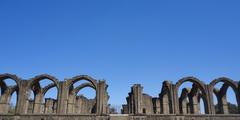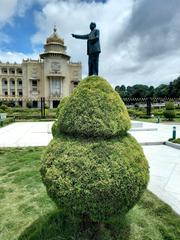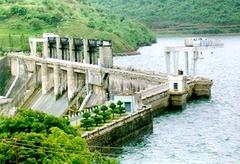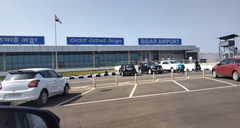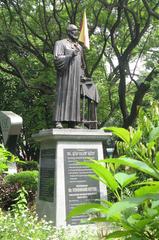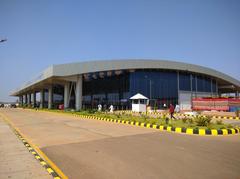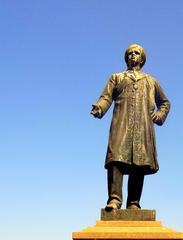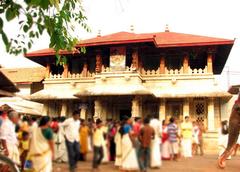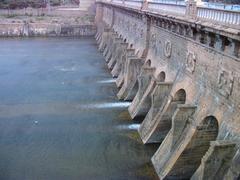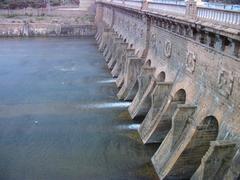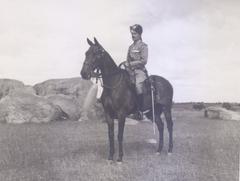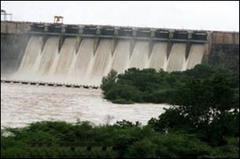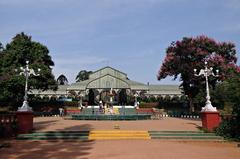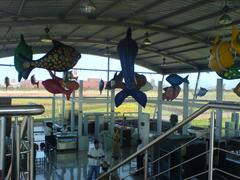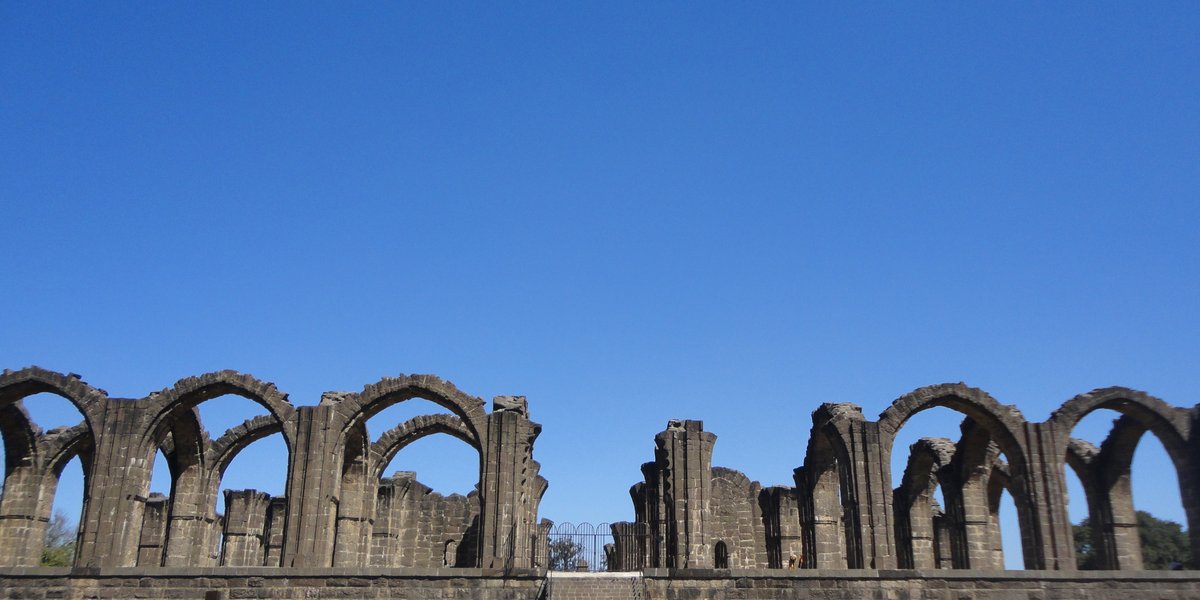
Visiting Bara Kaman in Vijayapura: Hours, Tickets, and Tips
Date: 18/07/2024
Introduction
Bara Kaman, meaning ‘Twelve Arches’ in Urdu, stands as a majestic yet unfinished architectural marvel in the heart of Vijayapura, Karnataka, India. This monument, conceived during the reign of Ali Adil Shah II in 1672, intended to surpass the grandeur of his father’s tomb, Gol Gumbaz. The Adil Shahi dynasty, known for their patronage of the arts and grand architectural vision, sought to create a final resting place for Ali Adil Shah II that would reflect their Indo-Islamic aesthetic, blending Persian, Turkish, and Deccan traditions. Despite its incomplete state, Bara Kaman captivates historians and tourists alike with its towering arches and the historical narrative it embodies. As a protected monument under the Archaeological Survey of India, it continues to attract visitors from around the world, offering a glimpse into the ambitions and architectural prowess of the Adil Shahi dynasty (source).
Table of Contents
- [Introduction](#introductionintroduction)
- [Historical Significance and Background](#historical-significance-and-backgroundhistorical-significance-and-background)
- [The Vision of Ali Adil Shah II](#the-vision-of-ali-adil-shah-iithe-vision-of-ali-adil-shah-ii)
- [Architectural Splendor and Ambition](#architectural-splendor-and-ambitionarchitectural-splendor-and-ambition)
- [An Unfinished Legacy](#an-unfinished-legacyan-unfinished-legacy)
- [Financial Constraints](#financial-constraintsfinancial-constraints)
- [The Sultan’s Demise](#the-sultans-demisethe-sultans-demise)
- [Structural Challenges](#structural-challengesstructural-challenges)
- [From Mausoleum to Seat of Power](#from-mausoleum-to-seat-of-powerfrom-mausoleum-to-seat-of-power)
- [Aurangzeb’s Court](#aurangzebs-courtaurangzebs-court)
- [Administrative Center](#administrative-centeradministrative-center)
- [Visitor Information](#visitor-informationvisitor-information)
- [Visiting Hours](#visiting-hoursvisiting-hours)
- [Ticket Prices](#ticket-pricesticket-prices)
- [Travel Tips](#travel-tipstravel-tips)
- [Nearby Attractions](#nearby-attractionsnearby-attractions)
- [Accessibility](#accessibilityaccessibility)
- [Special Events and Guided Tours](#special-events-and-guided-toursspecial-events-and-guided-tours)
- [Photographic Spots](#photographic-spotsphotographic-spots)
- [FAQ](#faqfaq)
- [Conclusion](#conclusionconclusion)
- [References](#referencesreferences)
Historical Significance and Background
The Vision of Ali Adil Shah II
Construction of Bara Kaman commenced in 1672 under the reign of Ali Adil Shah II, the seventh ruler of the Adil Shahi dynasty. Known for his patronage of the arts and grand vision, Ali Adil Shah II envisioned Bara Kaman as his final resting place, a mausoleum surpassing all others in grandeur and scale.
Architectural Splendor and Ambition
The structure’s design reflects the dynasty’s embrace of Indo-Islamic architectural styles, blending elements from Persian, Turkish, and Deccan traditions. Had it been completed, Bara Kaman would have been a symmetrical marvel:
- A Colossal Cube: The base, a massive cube measuring 200 feet on each side, was intended to support a towering dome, echoing the design of the famed Gol Gumbaz, the tomb of Ali Adil Shah II’s father, Mohammed Adil Shah.
- Twelve Majestic Arches: Each side of the cube features three grand arches, totaling twelve, hence the name “Bara Kaman.” These arches, rising to a height of 50 feet, were designed to create a sense of awe and majesty.
- An Elevated Platform: The entire structure sits atop a raised platform, further emphasizing its grandeur and separating it from the surrounding landscape.
An Unfinished Legacy
Despite the ambitious plans and initial progress, Bara Kaman remained unfinished. Several theories surround the reasons for its incompletion:
Financial Constraints
The Adil Shahi dynasty faced increasing military pressure from the Mughal Empire during Ali Adil Shah II’s reign. This constant warfare likely strained the Sultanate’s resources, diverting funds away from grand architectural projects like Bara Kaman.
The Sultan’s Demise
Ali Adil Shah II died in 1672, the same year construction began on Bara Kaman. His untimely death, possibly due to illness, left the project without its primary patron and driving force.
Structural Challenges
Some historians speculate that the ambitious scale of the dome, intended to rival or even surpass the Gol Gumbaz, posed significant structural challenges. The Adil Shahi engineers may have struggled to find solutions, ultimately contributing to the project’s halt.
From Mausoleum to Seat of Power
Following Ali Adil Shah II’s death and the Mughal conquest of Bijapur in 1686, Bara Kaman took on new roles:
Aurangzeb’s Court
Mughal Emperor Aurangzeb, after conquering Bijapur, used Bara Kaman as a temporary court during his campaigns in the Deccan.
Administrative Center
Under Mughal rule, Bara Kaman served as an administrative building, housing government offices and courts.
Visitor Information
Visiting Hours
Bara Kaman is open daily from 8:00 AM to 6:00 PM. It’s advisable to visit early in the morning or late in the afternoon to avoid the midday heat.
Ticket Prices
Admission is free for all visitors. There are no ticket fees.
Travel Tips
The monument is easily accessible by road, and Bijapur is well-connected by rail and bus services. Local guides are available for hire to enrich your visit with historical insights.
Nearby Attractions
While in Bijapur, also visit the Gol Gumbaz, Ibrahim Rauza, and the Bijapur Fort to get a fuller sense of the city’s historical significance.
Accessibility
Bara Kaman is partially accessible to visitors with mobility impairments, with some uneven pathways and steps.
Special Events and Guided Tours
While there are no regular special events, guided tours are available. These tours provide a deeper understanding of Bara Kaman’s history and architecture and can be arranged through local tour operators.
Photographic Spots
Bara Kaman offers several excellent spots for photography. The twelve arches, in particular, provide stunning backdrops, especially during the golden hours of sunrise and sunset.
FAQ
Q: What are the visiting hours for Bara Kaman?
A: Bara Kaman is open daily from 8:00 AM to 6:00 PM.
Q: How much are tickets for Bara Kaman?
A: Admission is free for all visitors.
Q: Are there guided tours available?
A: Yes, guided tours can be arranged through local tour operators.
Q: What are some nearby attractions?
A: Nearby attractions include the Gol Gumbaz, Ibrahim Rauza, and the Bijapur Fort.
Conclusion
Today, Bara Kaman stands as a powerful reminder of the architectural prowess and ambition of the Adil Shahi dynasty. Visitors can wander among the towering arches, imagining the grandeur of the completed mausoleum and reflecting on the historical forces that shaped its fate. For those interested in exploring Bijapur’s rich history, Bara Kaman is a must-visit.
References
- Archaeological Survey of India. (2023). ASI protected monuments. asi.nic.in
